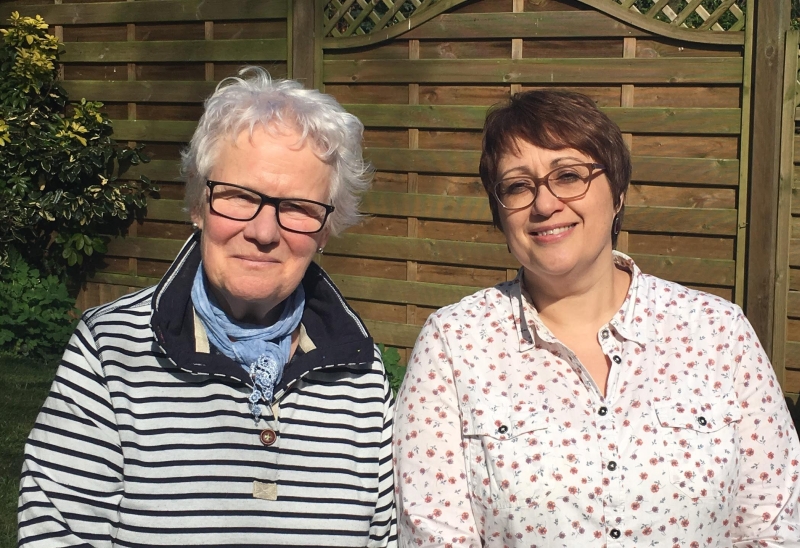Early Universal Screening Can Help Address Speech And Language Issues Before The Damage Is Done

Between 50% and 90% of children with persistent speech, language and communication needs go on to have reading difficulties.

It is shocking but no longer a surprise that in areas of poverty, over half of all children start school with delayed speech and language. This has consequences: between 50% and 90% of children with persistent speech, language and communication needs (SLCN) go on to have reading difficulties, and two-thirds of 7–14 year-olds with serious behaviour problems have language impairment. Additionally, most children with SEN have SLCN.
The good news is that robust tier 1 (universal) speech and language strategies aimed at both prevention and early identification make a difference!
Put it into practice
Much has been written about the importance of language development and the key role played by early years settings. What might be news, though, is that as much as two years ago universal screening was specifically highlighted by Ofsted, describing an example of good practice: “[…] It includes in-depth screening of children’s language development, which can lead to early targeted support […]” (p22)
That’s all very well you, might say, but how on earth do we go about it? Here are some pointers.
Step 1 – Getting started
It’s vital to choose the right resource. Before investing, check your preferred option gives you
- a screening tool
- a score and rating system, so you know how many children are either very behind or not too much of a worry (and who those children are)
- activities to pick up and use immediately
Step 2 – Choose a ‘lead’ person
This is by no means mandatory, but things work well when one person has overall responsibility. This doesn’t mean that the lead does everything to the exclusion of anyone else! In fact the opposite – having several staff to screen and deliver interventions avoids putting ‘all your eggs in one basket’. Dawn, an experienced TA at one of the settings we work with, had the ‘lead person’ role handed to her but is clear about the benefits: “Having one person to oversee the programme instilled confidence in staff to run it reliably and the progress spoke for itself.”
Step 3 – Decide the responsibilities of the lead
Whoever is chosen to spearhead your efforts should become familiar with the screening tool chosen. They should put together a timetable – how and when the screening will happen – gather and ‘hold’ the data, support getting the necessary intervention groups going, identify when to re-screen and then compare the results.
Step 4 – Get everyone on board
Some of the settings we work with are a year down the line with their universal screening, others are further along. Staff have come to see the screening – intervention – re-screening cycle as an integral part of what they do; they feel they can ‘unpick’ why some children make less progress and know when to ask for specialist help; and they have more confidence to appropriately cater for children for whom EAL is the primary reason for slow language development.
Maximise the impact
- Delivered properly your interventions can make a real impact, reducing the numbers of children with significant difficulties and increasing those at ‘Age-appropriate or just below’. The data comparisons can be dramatic: in one nursery setting the proportion of children causing concern fell from 40% to just 10% from spring 2016 to May 2017, while those considered ‘Age-appropriate or just below’ rose from 60% to 90% in the same period.
- Work to move those working at just below age-expected levels up to ‘Age-appropriate’ – this will give children time to consolidate their skills before they are assessed on whether they have reached a good level of development.
- Identify the added value in your efforts; children who are broadly age-appropriate can also make valuable gains.
- Show how children from your nursery are further ahead than those joining Reception from other settings.
Diana and Jo are directors of Soundswell Speech and Language Therapy Solutions. The advice in this article is based on a model developed in partnership with experienced EYFS staff, designed to support settings to take ownership of speech and language development. Follow them on Twitter at @SoundswellSLT.
Check what people need before you start and put on some basic training if that’s required. Staff need to know
- How speech and language develops – knowing ‘what happens when’ helps staff to implement strategies in the right way.
- When to start screening – ideally, allow your new cohort to settle into Reception and then screen (so, towards the end of September). Aim to get interventions underway after the October half-term. Re-screening towards the end of March will give you plenty of time to make the most of your intervention groups.
- What will help children who arrive with little or no English – the Wellcomm Toolkit gives some advice on home language screening. Also draw on your own experience: children with additional needs will acquire language more slowly, regardless of whether they are monolingual or bilingual speakers. For some you may decide to offer targeted vocabulary interventions and defer screening for a term or so.
- How to screen – the lead has a role in understanding what to do and supporting everyone else to work in a similar way.
- Why they need to screen – to identify those who are at risk of/already falling behind so that action is taken at the earliest opportunity.
- How to group children – not everyone with the same level of difficulty will be behind for the same reason. Beware grouping only very low children together; it will be tough to deliver without one or two more able children to act as good role models.
- That some children may need individual help and/or specialist assessment – look out for children with obvious SEN who may disrupt the dynamics of your group/s. Remember, what you are delivering is at a universal level; for some this will not be sufficient to address significant needs.
- When to be sure children have ‘got it’ – you will see progress within the sessions but skills learned here need to become ‘generalised’. Look out for structures taught cropping up in other curriculum areas and during play.
- When to move on – as with any other area of the curriculum, when most children have successfully mastered most of your intervention plan, move on.
- When to re-screen – GL Assessment’s Toolkit advises after three months, but we advise flexibility; you need time to deliver the interventions. There is no point in rescreening too early – the longer you leave it, the more gains will be made.
- Understand what is meant by ‘measuring impact – put simply, it’s proving what you do is effective. See the panel opposite for our suggestions.
Key to success
Some of the settings we work with are a year down the line with their universal screening, others are further along. Staff have come to see the screening – intervention – re-screening cycle as an integral part of what they do; they feel they can ‘unpick’ why some children make less progress and know when to ask for specialist help; and they have more confidence to appropriately cater for children for whom EAL is the primary reason for slow language development.
Maximise the impact
- Delivered properly your interventions can make a real impact, reducing the numbers of children with significant difficulties and increasing those at ‘Age-appropriate or just below’. The data comparisons can be dramatic: in one nursery setting the proportion of children causing concern fell from 40% to just 10% from spring 2016 to May 2017, while those considered ‘Age-appropriate or just below’ rose from 60% to 90% in the same period.
- Work to move those working at just below age-expected levels up to ‘Age-appropriate’ – this will give children time to consolidate their skills before they are assessed on whether they have reached a good level of development.
- Identify the added value in your efforts; children who are broadly age-appropriate can also make valuable gains.
- Show how children from your nursery are further ahead than those joining Reception from other settings.
Diana and Jo are directors of Soundswell Speech and Language Therapy Solutions. The advice in this article is based on a model developed in partnership with experienced EYFS staff, designed to support settings to take ownership of speech and language development. Follow them on Twitter at @SoundswellSLT.











